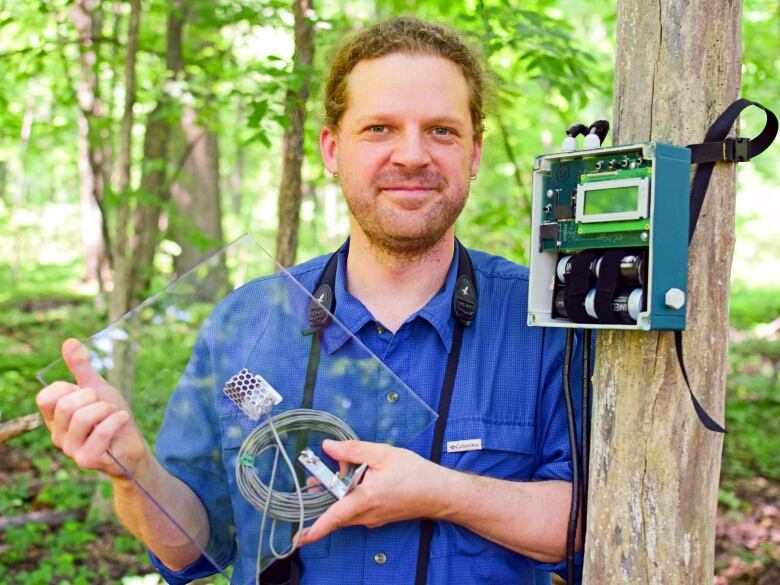City lights slow nighttime bird migration, study shows
University of Windsor study records bird migration paths with microphones

Birds migrating at night are taking much longer flight paths because of light coming from urban centres, say researchers at the University of Windsor.
Three times more birds are taking their nighttime migratory paths through lighted towns and cities instead of taking more direct routes, the study, conducted by biology professor Dan Mennill and undergraduate student Matt Watson in fall 2013, found.
The research was published as the article, Anthropogenic light is associated with increased vocal activity by nocturnally migrating birds, in the April 2016 edition of the Condor, the journal of the Cooper Ornithological Society.
Past research has studied how light from skyscrapers and communication towers affect these same migrations, but this is the first study to look at how low-level and ground lighting affects migratory patterns.
Birds use stars to navigate during their migration and artificial light confuses them, Mennill said. "Even a single lightbulb is enough to change the behaviour of birds migrating overhead," Mennill told CBC News.
Microphones record migration
The study started after Watson noticed more bird calls were being heard at a recording site located near astreet light. The university has been studying bird migration, primarily in songbirds, through the Great Lakes, using audio recordings by pointing microphones at the sky.
A change in flight paths is a problem because the migrating birds are often travelling a long distance and flying over lit areas only increases that distance, Mennill said.
The shortest distance between two points is always a straight line, but birds that follow ground-level lighting may end up flying a zigzag pattern. Some examples, include birds bred at Ojibway Prairie Conservation Reserve in Windsor, Ont. thattook a less direct route to Costa Rica.

"They need to be maximally efficient when they're moving in order to arrive at their wintering grounds in the best condition they can and then back to their breeding grounds at this time of year in the best condition they can," he said.
Since the birds could not be seen at night, researchers placed microphones in 32 locations in Essex County, pairing a lighted location with a similar one in darkness.
Researchers then recorded the birds' nighttime calls as they flew over the area and compared the number of calls over each area. The calls were also listened to in a university lab to determine the species.
Identifying patterns
On average, around 10 calls were recorded at the dark sites and more than 30 in lighted locations.
Using technology at the university, they can figure out what species is flying above the microphone based on subtle differences in the sounds made, ranging from warblers to sparrows and several other types of songbirds.
The study does not definitely prove there are more birds flying over lit areas than dark areas, Mennill cautioned.
He said it's possible the birds could be changing their path to fly over lights. Thney could also be flying lower over lighted areasor they may be making more calls over lighted areas than they do over darkened locations.
According to Mennill, the best way to help birds during the migration period is to turn off your lights when possible during the spring migration, which happens in April and May, and during fall migration, between September and October.
"Flipping off those backyard lights after dark can only help the birds passing overhead," Mennill said.
More research will be done in coming years to determine if other aspects such as reflectors on streetlights or the intensity of lighting have any impact on migration.
With files from Windsor Morning












_(720p).jpg)


 OFFICIAL HD MUSIC VIDEO.jpg)
.jpg)



























































































